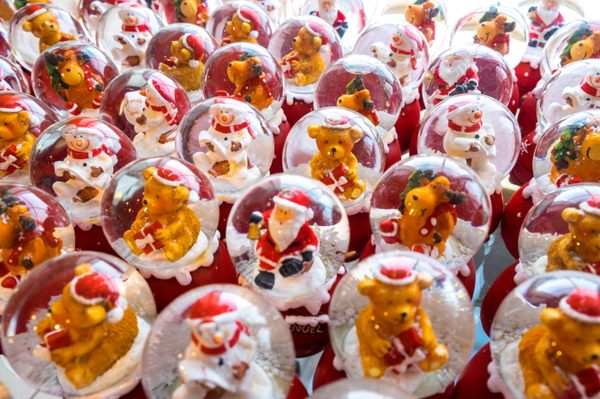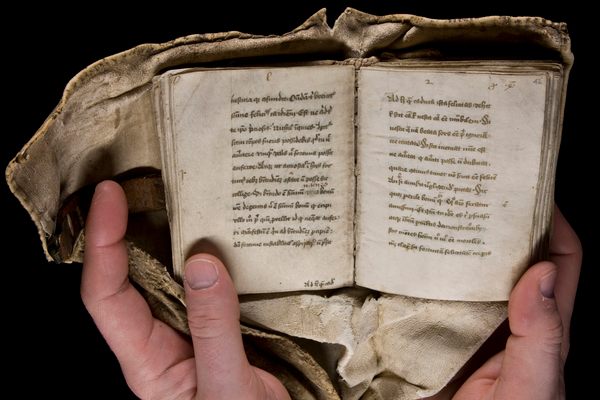This Christmas, Jam a Candle in an Orange
Add some ribbon and candy kebabs and you’ve got yourself a Christingle.

Why is that orange speared with toothpick-candy-kebabs and a candle? It’s a Christingle. And it’s intended to teach kids the importance of Jesus Christ.
The tradition of the Christingle dates back to the 18th century Moravian Church in Marienborn, Germany. During an advent service there in 1747, minister John de Watteville was preaching to the children of his congregation, telling them about the many virtues of Jesus and the happiness he can bring.
According to the website of the British Province Moravian Church, de Watteville gave each child a small candle with a red ribbon wrapped around it, saying that it was Jesus “who has kindled in each little heart a flame which keeps burning to their joy and our happiness.” The candle’s flame represented the joy in people’s hearts and the red ribbon symbolized the blood of Jesus.

From this initial service, the tradition of giving children the symbolic, ribbon-wrapped candle continued within the Moravian Church, usually taking place during an advent ceremony. As the church spread across Europe, it brought the tradition along with it.
The name of the little gift sounds a bit goofy to modern ears, and the church seems unsure exactly when the term “Christingle” first came into fashion, but they suggest that it is some kind of modern evolution of a German term meaning “Christ light” or “Christ child.” Wherever it comes from, it’s pretty delightful.
While candle-lighting ceremonies have been observed by Christian churches since the beginning of time, the Christingle festivities remained within the Moravian faith until 1968. According to a 2014 article from the BBC, it wasn’t until then that a man named John Pensom brought the tradition to the world by organizing a non-Moravian-Church-sponsored Christingle celebration as a fundraiser for an English youth charity, The Children’s Society.
Held on December 7 at the Lincoln Cathedral in the East Midlands of England, the ceremony was only expected to attract around 300 people, but close to 1,500 showed up. The next year, the Society held seven Christingle services, and more than twice that the next year. By the time Pensom passed away in 2006, he was known as “Mr. Christingle.”
The popularity of the Christingle has only grown since The Children’s Society introduced it to England. Today, thousands of Christingle ceremonies take place each year in schools and churches all over the world. However, both the Christingle and the event surrounding them have changed quite a bit since the 1700s.
A far cry from the simple candle and ribbon de Watteville gave children, the modern Christingle is a more complicated and abstractly symbolic item. The main component of today’s Christingle is an orange, which is meant to represent the world. The candle signaling life’s flame sticks out of the top of the orange, although in light of fire safety concerns, this is sometimes replaced with a glowstick. The red ribbon symbolizing Christ’s blood is also still there, usually wrapped around the orange or the candle. Finally, the Christingle now features four toothpicks poked into the orange representing the four cardinal directions, and these spears are adorned with nuts, candy, and/or fruit, representing the bounty God provides.
Altogether, the modern Christingle is a festive, colorful little oddity that drums up warm holiday feelings for those who have grown up with them as a tradition, and puzzled looks from those outside the bubble.
The ceremonies in which Christingles are given out are usually a mix of charity event and religious service. Christingle ceremonies still tend to take place on advent holidays, or Christmas Eve, when children will hand over a donation to a church or charity in exchange for their Christingle. Then they are all lit, carols are sung, and a festive atmosphere ensues.
Christingles have become a fairly common sight in UK holiday traditions, but have yet to really make a splash in the U.S. But how long can America ignore something that’s just so fun to say? Christingle!
Object of Intrigue is a weekly column in which we investigate the story behind a curious item. Is there an object you want to see covered? Email ella@atlasobscura.com.















Follow us on Twitter to get the latest on the world's hidden wonders.
Like us on Facebook to get the latest on the world's hidden wonders.
Follow us on Twitter Like us on Facebook